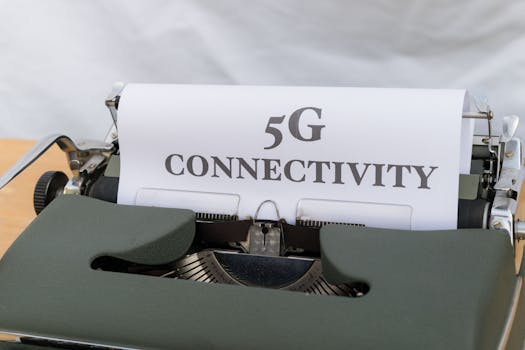
The Role of IoT in Mobile Network Evolution – Advancements and Opportunities
The role of IoT in mobile network evolution is a crucial one, as the increasing demand for connectivity and data exchange between devices drives the need for more advanced and efficient networks. The Internet of Things (IoT) is a network of physical devices, vehicles, home appliances, and other items embedded with sensors, software, and connectivity, allowing them to collect and exchange data. As the number of IoT devices continues to grow, mobile networks must adapt to handle the increased traffic and provide the necessary infrastructure to support the vast amount of data being generated.
IoT is at the forefront of mobile network evolution, with the development of 5G technology being a key factor in the growth of IoT. 5G networks provide faster data speeds, lower latency, and greater connectivity, making them ideal for IoT applications. The increased capacity and reduced latency of 5G networks enable the widespread adoption of IoT devices, which in turn drives the demand for more advanced mobile networks.
Advancements in 5G Technology
5G technology is a key driver of IoT growth, providing the necessary infrastructure to support the vast amount of data being generated by IoT devices. The development of 5G networks has led to significant advancements in mobile network technology, including faster data speeds, lower latency, and greater connectivity. These advancements have enabled the widespread adoption of IoT devices, which in turn has driven the demand for more advanced mobile networks.
The integration of IoT and 5G technology has also led to the development of new use cases, such as smart cities, smart homes, and industrial automation. These use cases require the efficient and reliable transfer of large amounts of data, which 5G networks are well-equipped to handle. The low latency and high-speed data transfer of 5G networks also enable the use of IoT devices in real-time applications, such as remote healthcare and autonomous vehicles.
Opportunities and Challenges
The role of IoT in mobile network evolution presents both opportunities and challenges. On the one hand, the growth of IoT has driven the development of more advanced mobile networks, which has enabled the widespread adoption of IoT devices. On the other hand, the increased demand for connectivity and data exchange between devices has put a strain on mobile networks, requiring significant investments in infrastructure and technology.
One of the major challenges facing mobile network operators is the need to provide the necessary infrastructure to support the vast amount of data being generated by IoT devices. This requires significant investments in network infrastructure, including the deployment of small cells, macro cells, and other network equipment. Additionally, mobile network operators must ensure that their networks are secure and reliable, as the increased connectivity and data exchange between devices also increases the risk of cyber attacks and data breaches.
Conclusion
In conclusion, the role of IoT in mobile network evolution is a significant one, driving advancements in 5G technology and beyond. The integration of IoT and 5G technology has led to the development of new use cases and has enabled the widespread adoption of IoT devices. However, the growth of IoT also presents challenges, including the need for significant investments in infrastructure and technology. As the demand for connectivity and data exchange between devices continues to grow, mobile network operators must be prepared to adapt and evolve to meet the changing needs of the market.